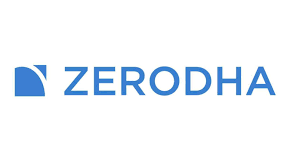Management and Ownership are two distinct yet interrelated concepts within the corporate world. Understanding the differences and interactions between these two can provide clarity on organizational structure, control, and accountability.
Definitions:
- Management: Refers to the group of individuals responsible for running the day-to-day operations of a company. This includes planning, organizing, leading, and controlling resources to achieve organizational goals.
- Ownership: Refers to the individuals or entities that hold the equity or shares of the company. Owners have a financial stake in the company and typically exercise control through voting rights and board memberships.
Key Differences:
Roles and Responsibilities:
- Management: Focuses on executing strategies, overseeing operations, making tactical decisions, and ensuring the company runs efficiently and effectively.
- Ownership: Concerned with the broader governance and strategic direction of the company. Owners may influence major decisions, but they do not manage daily operations.
Decision-Making:
- Management: Makes decisions about operational aspects, such as hiring, marketing strategies, production processes, and financial management.
- Ownership: Makes decisions related to the ownership structure, such as mergers, acquisitions, selling the company, or appointing senior executives.
Accountability:
- Management: Accountable to the board of directors and, ultimately, to the shareholders. Their performance is often evaluated based on the company’s operational success and financial performance.
- Ownership: Accountable to themselves and other shareholders. Their primary concern is the return on their investment and the overall value of the company.
Risk:
- Management: Faces career risk but typically does not bear financial risk beyond their employment terms and performance incentives.
- Ownership: Bears financial risk as their investment’s value can fluctuate based on the company’s performance and market conditions.
Compensation:
- Management: Receives salaries, bonuses, and other performance-based incentives.
- Ownership: Gains returns through dividends, stock price appreciation, or sale of their shares.
Interrelationship:
While management and ownership have distinct roles, their relationship is symbiotic:
- Alignment of Interests: Ideally, management acts in the best interest of the owners to maximize shareholder value. Incentive structures, such as stock options, can align the interests of managers with those of the owners.
- Governance: Owners exercise control through the board of directors, which oversees management and ensures they act in the shareholders’ best interests.
- Communication: Effective communication between management and ownership is crucial for transparency, trust, and the overall health of the company.
In summary, the distinction between management and ownership is fundamental in corporate governance. Management focuses on the operational execution, while ownership focuses on strategic control and value creation. Understanding this dynamic is crucial for stakeholders to navigate and optimize their roles within an organization.
| Aspect | Management | Ownership |
|---|---|---|
| Definition | Group responsible for daily operations and implementation of company strategies | Individuals or entities holding equity shares in the company |
| Roles | – Planning – Organizing – Leading – Controlling | – Governance – Strategic Decision-Making – Financial Oversight |
| Decision-Making | – Operational decisions – Tactical decisions – Strategic input | – Strategic decisions – Control via Board of Directors |
| Accountability | – Performance assessed through KPIs like revenue growth, profitability, operational efficiency | – Concerned with ROI, measured through stock price appreciation, dividends, and shareholder value |
| Risk and Reward | – Career risk – Limited financial risk – Bonuses and stock options for successful performance | – Financial risk – Reward potential through dividends and stock price increases |
| Compensation Structure | – Salary – Performance-based bonuses – Stock options | – Dividends – Capital gains from stock value increases |
| Governance and Oversight | – Implementing internal controls – Regular reporting to the board and shareholders | – Electing Board of Directors – Participating in shareholder meetings |
| Alignment of Interests | – Stock options and performance-based compensation to align interests with shareholders | – Ensuring long-term value creation and strategic direction |

